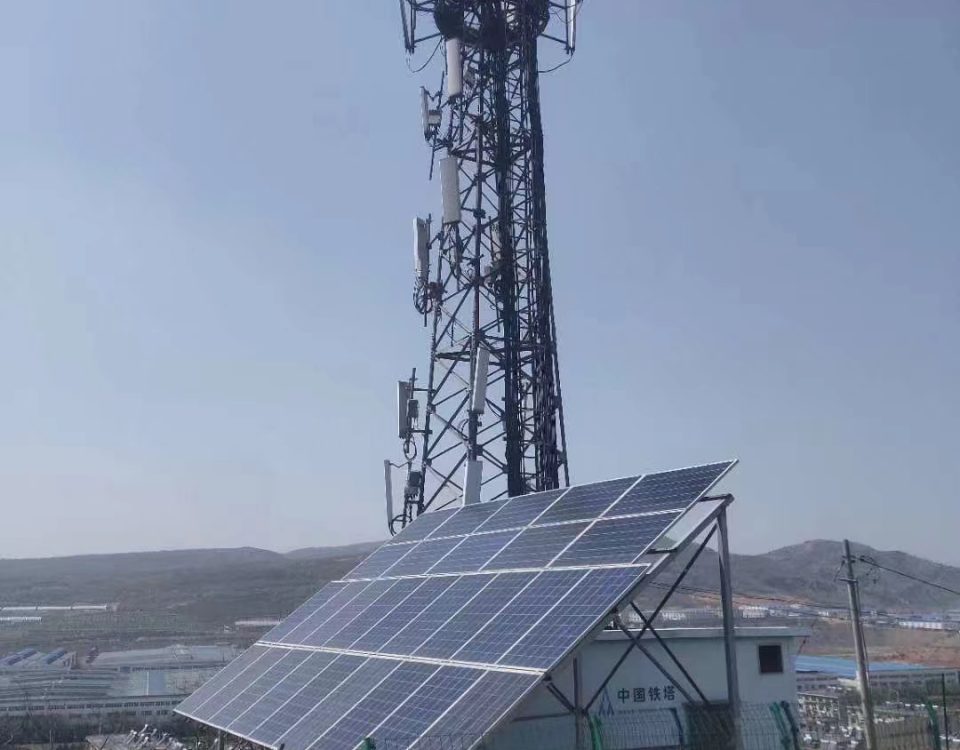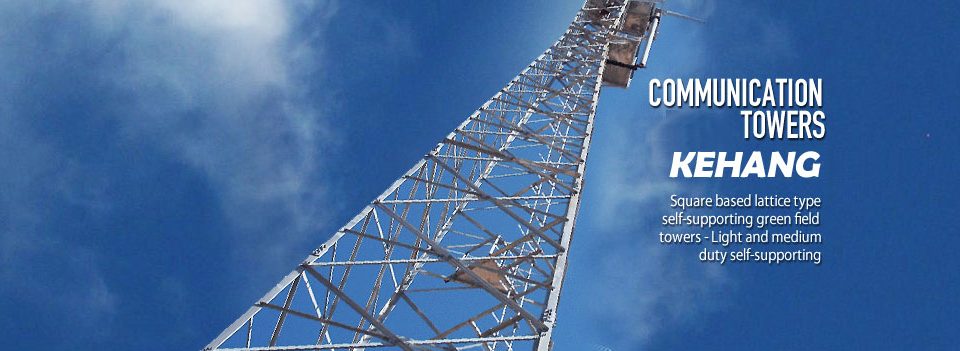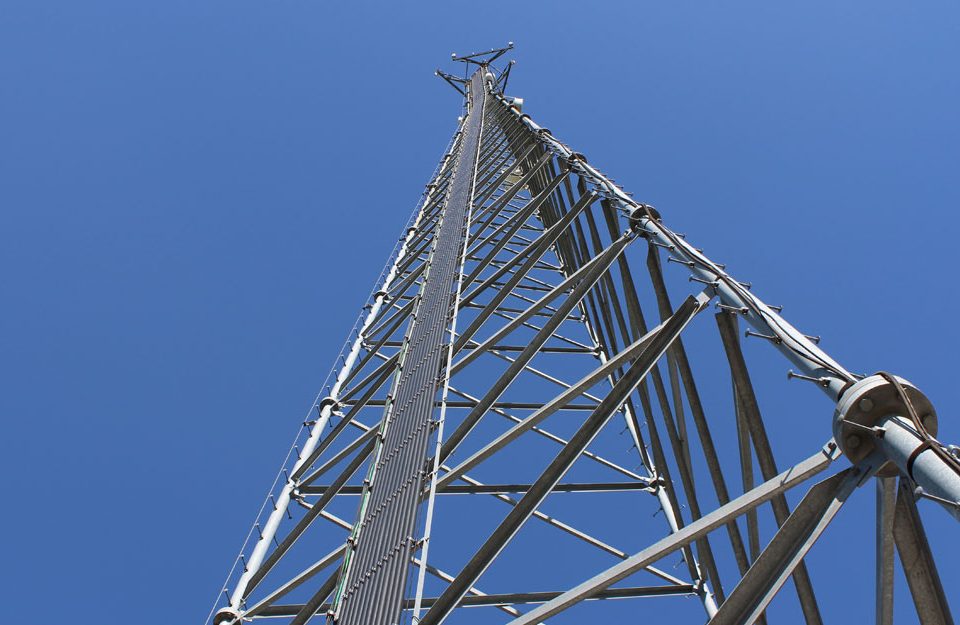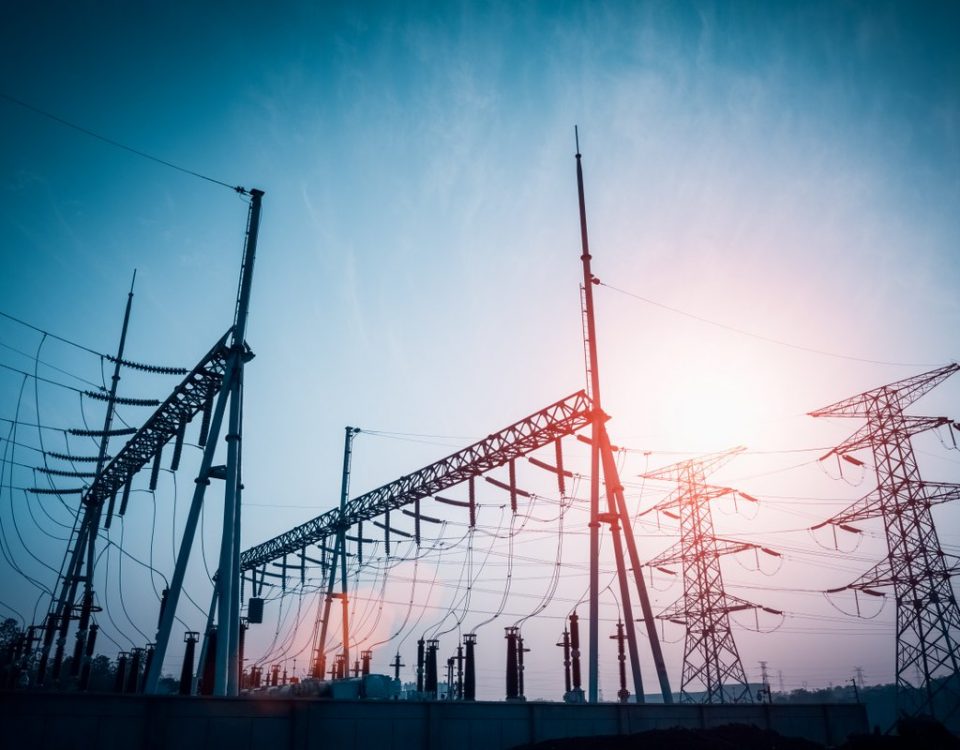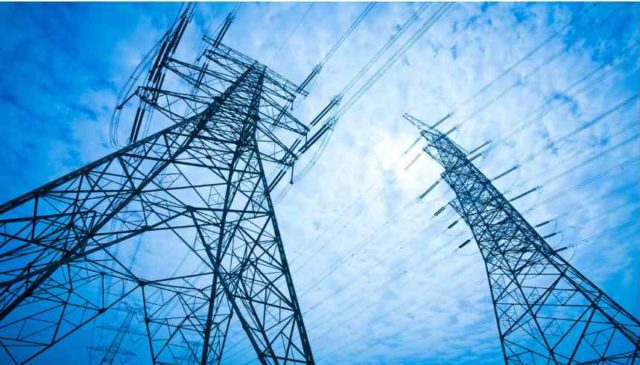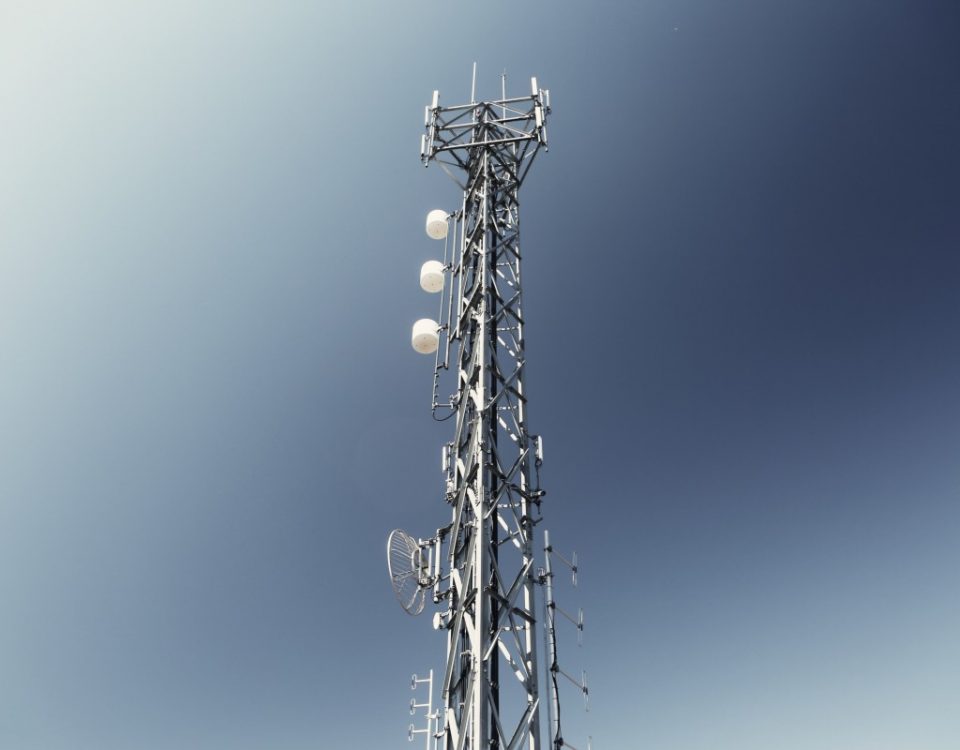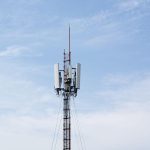
Guyed Wire Telescopic Antenna Carbon Steel Towers
June 5, 2025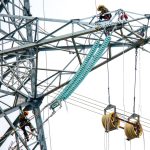
Research on Anti-Corrosion Protective Coating for Transmission Line Towers
July 1, 2025Technical Conditions for Manufacturing Transmission Line Tower
Technical Conditions for Manufacturing Transmission Line Towers
1. Overview of Transmission Line Tower Manufacturing Standards
The manufacturing of transmission line towers is governed by rigorous technical standards to ensure structural integrity, safety, and reliability in high-voltage power transmission systems. In China, the national standard GB/T 2694-2018: Specification of Manufacturing for Transmission Line Towers (replacing GB/T 2694-2010) outlines comprehensive requirements for material selection, fabrication processes, inspection protocols, and corrosion protection. This standard, managed by the relevant standardization bodies, applies primarily to towers constructed from angle steel components connected by fasteners and protected with hot-dip galvanization. It also extends to similar steel structures, such as power microwave towers and communication towers. The standard addresses critical aspects like dimensional tolerances, weld quality, mechanical properties, and packaging, ensuring towers can withstand environmental loads and operational stresses over their design life, typically 30–50 years.
Transmission line towers are predominantly lattice structures, utilizing carbon steel grades such as Q235T, Q345T, and Q420T, which offer yield strengths of 235 MPa, 345 MPa, and 420 MPa, respectively. These materials are chosen for their balance of strength, ductility, and cost-effectiveness. The manufacturing process involves cutting, punching, bending, welding, and galvanizing, with each step subject to strict quality control to meet dimensional and performance criteria. For instance, GB/T 2694-2018 specifies tolerances for component dimensions (e.g., ±1 mm for critical lengths) and weld imperfections, aligning with standards like GB 3323 for radiographic weld quality assessment. The standard also incorporates updated terminology, material marking requirements, and data handover protocols compared to its predecessor, reflecting advancements in manufacturing precision and traceability.
| Parameter | Description | Typical Values |
|---|---|---|
| Material | Carbon steel | Q235T, Q345T, Q420T |
| Yield Strength | Minimum stress before deformation | 235–420 MPa |
| Component Tolerance | Dimensional accuracy | ±1 mm (critical lengths) |
| Galvanization Thickness | Corrosion protection | 80–100 µm |
| Weld Quality Standard | Radiographic assessment | GB 3323 |
2. Material Selection and Properties
Material selection is a cornerstone of transmission line tower manufacturing, as the towers must endure dynamic loads, including wind, ice, and seismic forces. Carbon steel grades Q235T, Q345T, and Q420T are specified in GB/T 2694-2018 due to their mechanical properties and availability. Chemical composition analysis, conducted using tools like mobile direct-reading spectrometers (accuracy ±0.03%), ensures compliance with material standards. For example, Q235T typically contains 0.14–0.22% carbon, while Q345T and Q420T have higher manganese and silicon content to enhance strength. These compositions are critical to prevent issues like tower collapse due to material grade mix-ups, which have been reported in operational towers.
The mechanical properties of these steels are governed by standards like GB/T 3098.1 (bolts, screws, and studs) and GB/T 3098.2 (nuts), ensuring fasteners match the tower’s structural requirements. Hot-dip galvanization, per GB/T 470 (zinc ingots), provides a protective zinc coating of 80–100 µm to combat corrosion, particularly in humid or coastal environments. The galvanization process must be controlled to avoid zinc layer defects, which could reduce service life by 10–15%. Advanced non-destructive testing (NDT), such as ultrasonic and magnetic particle inspection, verifies material integrity and weld quality, ensuring compliance with GB/T 2694-2018.
| Material Grade | Carbon Content (%) | Yield Strength (MPa) | Tensile Strength (MPa) | Typical Application |
|---|---|---|---|---|
| Q235T | 0.14–0.22 | 235 | 370–500 | Secondary members |
| Q345T | 0.12–0.20 | 345 | 470–630 | Main structural members |
| Q420T | 0.12–0.18 | 420 | 520–680 | High-load components |
3. Fabrication Processes and Quality Control
The fabrication of transmission line towers involves several key processes: cutting, punching, bending, welding, and galvanizing. Each process is governed by GB/T 2694-2018, which specifies tolerances and quality requirements. For instance, cutting and punching must achieve dimensional accuracies of ±1 mm for critical components and ±2 mm for non-critical parts to ensure proper assembly. Welding, primarily for angle steel connections, adheres to GB 3323 for radiographic quality, with permissible imperfection levels defined to prevent crack propagation under cyclic loading. Weld seams are inspected using NDT methods, such as ultrasonic testing, to detect internal flaws, ensuring a defect rate below 1%.
Hot-dip galvanization is a critical step, as it protects against corrosion in diverse environmental conditions. The process involves submerging steel components in a molten zinc bath at 450–460°C, achieving a uniform coating thickness of 80–100 µm. GB/T 2694-2018 mandates post-galvanization inspection to verify coating adhesion and thickness, using tools like magnetic thickness gauges. Deviations, such as excessive zinc buildup, can increase weight by 2–5%, affecting structural calculations. Quality control extends to fastener assembly, where bolts and nuts must meet GB/T 3098 standards for mechanical performance, ensuring torque values align with design specifications (e.g., 50–100 Nm for M16 bolts).
| Process | Standard | Tolerance/Requirement | Inspection Method |
|---|---|---|---|
| Cutting/Punching | GB/T 2694-2018 | ±1 mm (critical) | Caliper, laser measurement |
| Welding | GB 3323 | Imperfection level B | Radiographic, ultrasonic |
| Galvanization | GB/T 470 | 80–100 µm | Magnetic thickness gauge |
| Fastener Torque | GB/T 3098 | 50–100 Nm (M16) | Torque wrench |
4. Structural and Environmental Load Considerations
Transmission line towers are subjected to complex loading conditions, including wind, ice, seismic forces, and conductor tension. GB/T 2694-2018 requires structural designs to comply with DL/T 5154 (Technical Code for Design of Tower Structures), which specifies wind speeds of 25–35 m/s and ice thicknesses of 5–20 mm, depending on regional conditions. For a 50-meter lattice tower, wind loads can generate base shear forces of 50–100 kN and overturning moments of 500–1000 kNm. Ice accumulation increases member forces by 15–25%, necessitating robust bracing systems, typically cross or K-bracing, to enhance torsional stiffness.
Seismic design follows GB 50260 (Code for Seismic Design of Power Facilities), with towers analyzed for ground accelerations of 0.1–0.4g. Finite element analysis ( Faro) models the tower’s response to dynamic loads, predicting natural frequencies (1–3 Hz for 50-meter towers) and ensuring deflections remain below 0.5% of tower height (e.g., 250 mm for a 50-meter tower). Guy wires, if used in hybrid designs, reduce seismic-induced displacements by 20–30% but require precise tensioning to avoid slack or overstress.
| Load Type | Typical Value | Impact on Tower |
|---|---|---|
| Wind Load | 25–35 m/s | Shear: 50–100 kN, Moment: 500–1000 kNm |
| Ice Load | 5–20 mm | Increases forces by 15–25% |
| Seismic Load | 0.1–0.4g | Displacement: 100–250 mm |
| Conductor Tension | 10–50 kN | Affects leg compression |
5. Inspection and Testing Protocols
Inspection and testing are integral to ensuring tower reliability. GB/T 2694-2018 outlines rules for dimensional checks, mechanical testing, and corrosion resistance evaluation. Dimensional inspections verify component sizes, hole alignments, and assembly fit, with tolerances of ±1 mm for critical members and ±2 mm for secondary members. Mechanical tests, per GB/T 3098, assess bolt and nut strength, ensuring shear and tensile capacities meet design loads (e.g., 400 MPa for M16 bolts). Weld quality is evaluated using radiographic or ultrasonic testing, with acceptance criteria based on GB 3323 level B standards.
Non-destructive testing (NDT) is critical for in-service towers to detect material degradation or grade mix-ups. Corrosion tests verify galvanization thickness, with samples subjected to salt spray tests (per GB/T 10125) to simulate 20–30 years of exposure.
| Test Type | Standard | Requirement | Method |
|---|---|---|---|
| Dimensional | GB/T 2694-2018 | ±1 mm (critical) | Caliper, CMM |
| Mechanical | GB/T 3098 | 400 MPa (M16 bolts) | Tensile testing |
| Weld Quality | GB 3323 | Level B | Radiographic, ultrasonic |
| Corrosion | GB/T 10125 | 80–100 µm | Salt spray test |
6. Comparison with Other Tower Types
Transmission line towers differ from communication towers, such as guyed wire telescopic or rooftop GSM towers, in scale, load capacity, and design complexity. Transmission towers, typically 30–100 meters tall, support high-voltage conductors (110–1000 kV), requiring robust foundations and higher material strength (Q345T/Q420T) compared to communication towers (Q235/Q345). Guyed wire telescopic towers (5–50 m) rely on cables for stability, reducing material costs by 20–30% but requiring larger land areas for anchors, making them less suitable for urban settings. Rooftop GSM towers (5–20 m) are constrained by building capacity but offer easier maintenance access.
Electromagnetically, transmission towers focus on conductor support, with minimal RF considerations, unlike GSM towers, which prioritize antenna performance. Structurally, transmission towers experience higher overturning moments (500–1000 kNm vs. 80–150 kNm for telescopic towers) due to conductor tension and span lengths (200–400 m).
| Tower Type | Height Range (m) | Base Shear (kN) | Installation Cost (USD) | Maintenance Complexity |
|---|---|---|---|---|
| Transmission Lattice | 30–100 | 50–100 | 50,000–150,000 | High |
| Guyed Telescopic | 5–50 | 15–25 | 10,000–30,000 | Moderate |
| Rooftop GSM | 5–20 | 10–20 | 10,000–30,000 | Low |
| Monopole | 10–50 | 12–25 | 15,000–40,000 | Low |
7. Advances in Manufacturing and Optimization
Modern manufacturing of transmission line towers leverages advanced technologies to enhance efficiency and precision. Computer-aided design (CAD) and finite element analysis optimize member sizing and bracing configurations, reducing material usage by 5–10% while maintaining safety factors. GB/T 2694-2018 incorporates updated requirements for digital documentation, enabling traceability through QR-coded components. Automated cutting and punching systems, guided by CNC machines, achieve tolerances of ±0.5 mm, improving assembly accuracy.
For 5G-related upgrades, hybrid designs combining guyed and self-supporting elements are explored, reducing foundation loads by 15–20%. Innovations in galvanization, such as zinc-aluminum coatings, extend corrosion resistance by 10–15 years compared to traditional zinc coatings. Smart sensors for real-time monitoring of tower stresses and corrosion are emerging, reducing maintenance costs by 10–15%.
| Technique | Benefit | Reduction in Cost/Time |
|---|---|---|
| FEA Optimization | Reduces material usage | 5–10% |
| CNC Fabrication | Improves tolerance | ±0.5 mm accuracy |
| Zinc-Aluminum Coating | Extends corrosion resistance | 10–15 years |
| Smart Sensors | Lowers maintenance costs | 10–15% |
8. Safety and Regulatory Considerations
Safety is paramount in transmission line tower manufacturing, given their role in critical infrastructure. GB/T 2694-2018 mandates safety factors of 1.5–2.0 for ultimate loads, ensuring towers withstand extreme conditions. In-service inspections, using NDT methods, address material mix-up risks, which have caused tower failures. Predictive maintenance reduces downtime by 20–30%.
Regulatory compliance includes environmental and aesthetic considerations. Towers in urban areas may require camouflaged designs, increasing costs by 10–15%.
| Safety Aspect | Requirement | Typical Compliance |
|---|---|---|
| Structural Safety Factor | 1.5–2.0 | Met with Q345T/Q420T |
| Material Verification | ±0.03% accuracy | Spectrometry |
| Deflection Limit | 0.5% of height | Achieved with FEA |
| Corrosion Resistance | 30–50 years | Zinc coating |
9. Future Trends and Challenges
The transmission line tower industry is evolving with increasing power demand, with China’s market reaching significant growth in recent years. Future trends include intelligent manufacturing, reducing costs by 10–20%, and advanced materials like high-strength low-alloy (HSLA) steels, increasing yield strength by 10–15%. Challenges include retrofitting for ultra-high-voltage (UHV) lines (800–1000 kV), which increase loads by 20–30%, and managing environmental impacts in sensitive areas.
| Trend | Impact | Challenge |
|---|---|---|
| Intelligent Manufacturing | Reduces costs | High initial investment |
| HSLA Steels | Increases strength | Material cost |
| UHV Retrofitting | Supports higher voltages | Increased loads |
| Environmental Compliance | Minimizes impact | Design complexity |
In conclusion, GB/T 2694-2018 provides a robust framework for manufacturing transmission line towers, ensuring structural reliability and safety. Advances in materials, automation, and monitoring will drive future innovations, addressing growing energy demands and environmental challenges.



